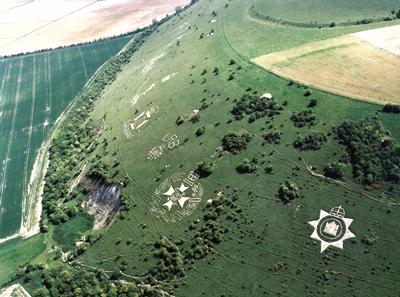War Landscape and Memory

On 7 May 2014 the History Department jointly hosted a public symposium on ‘War, Landscape and Memory’. Working with project partners the Fovant Badges Society (Wiltshire), it mounted a series of talks exploring how modern war has influenced the landscape, how communities and cultures have expressed their thoughts about war onto that landscape, and how we, as people curious about history, might go about exploring the issues this raises.
The symposium formed part of an ongoing collaboration between the Fovant Badges Society and the Department of History at Southampton to understand the evolving place and significance of the iconic Fovant Badges in the run-up to the anniversary of their first appearance in 1916. The aim is to establish a more historically-informed background to the Society’s project of creating a new badge to mark their centenary.
The series of four lectures was animated, above all, by the spirit of comparison. The papers offered the possibility to compare British and German experiences and to compare the First and the Second World Wars. They also allowed us to compare the practice of commemorating victory with the problem of remembering defeat; to compare the experiences and habits of soldiers with those of civilians. We had the juxtaposition of small rural villages with industrial cities, and much more besides.
To compare is not to equate, of course – quite the opposite, it often means teasing out the differences. But precisely in demonstrating, through comparison, that commemorative practices evolve differently in different contexts, we sharpen our sense that there is nothing natural about any of this – rather, it is entirely cultural. And this is what enables us, in turn, to sharpen our sense of what the specific forces are that have shaped the landscape of Fovant between 1916 and the present.
Wherein lies the peculiar challenge of thinking about such things? One has simultaneously to acknowledge their emotive power and the attachments they generate, but also to stand outside of that power and think analytically about it. That demands a great deal of sensitivity on the part of historians whose more distanced relationship to the object of study contrasts with that of those for whom the site has incredibly strong emotional resonance and meaning. Not least for that reason we closed with a lively roundtable discussion, in which colleagues from English Heritage and the Royal Navy joined with our historians (Dr Joan Tumblety and Professor Neil Gregor) to reflect on the issues the day had raised.